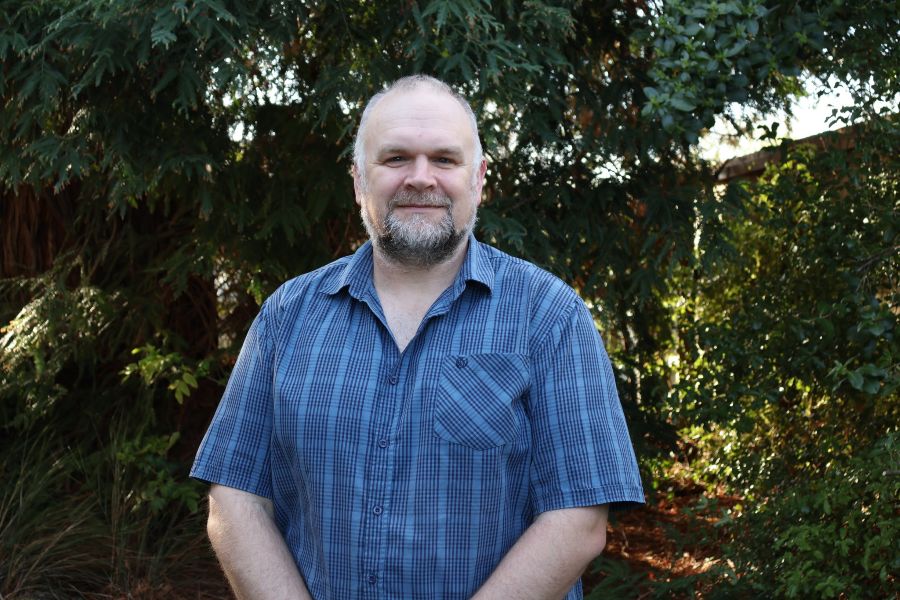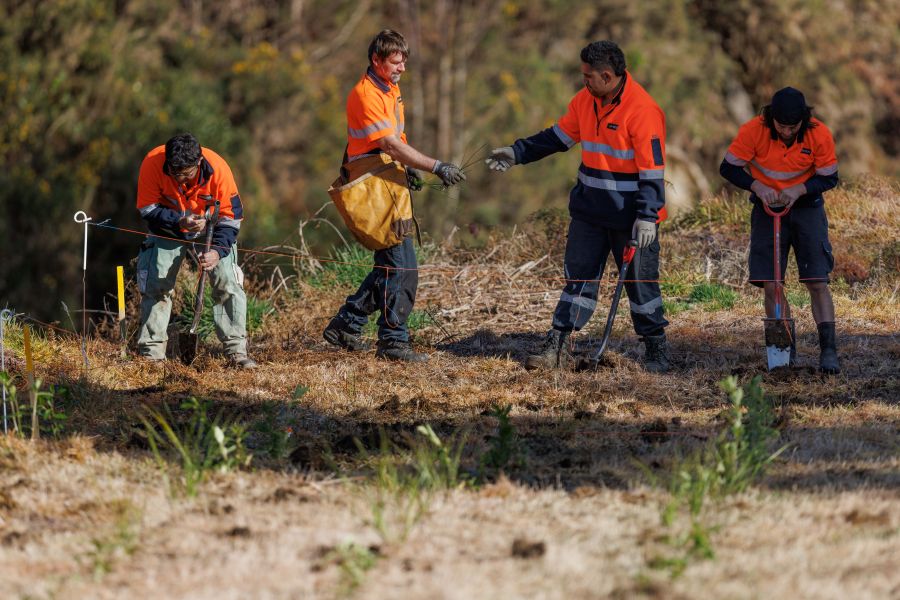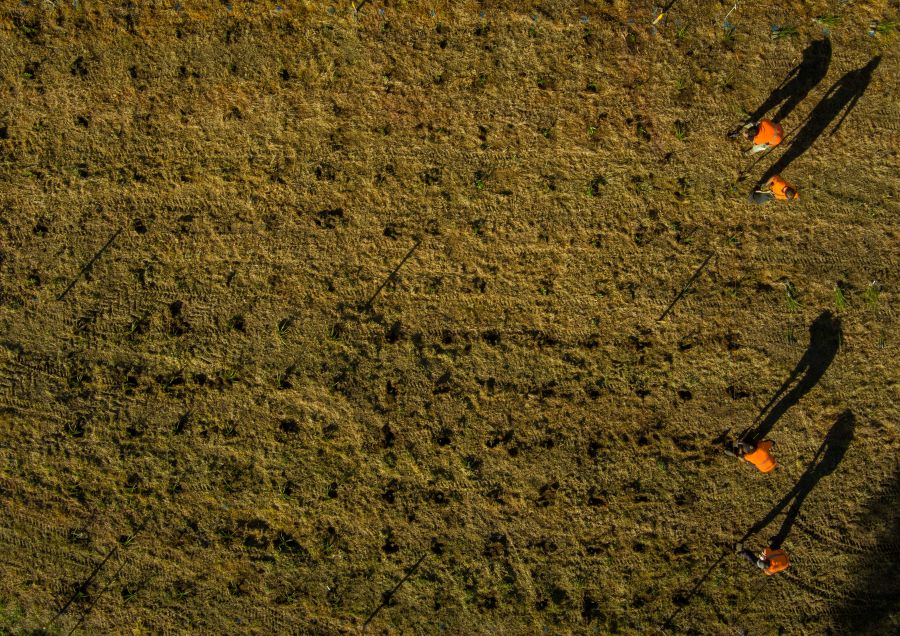
A career that’s anything but ordinary
Simeon Smaill knew early on his career path wouldn’t be conventional.
Guided by imagination and curiosity, the Bioeconomy Science Institute scientist has built a dynamic and fulfilling career shaped by exploration and ambition. These qualities keep Simeon motivated and have made his journey anything but ordinary.
A forest ecologist specialising in plant-soil-microbe interactions in forest systems, Simeon is the Establishing Indigenous Forests portfolio lead at the Scion Group of the Bioeconomy Science Institute. His role sees him supporting the establishment of indigenous forests – from getting good quality stock into and out of nurseries to understanding how to give native plants the best chance once they’re in the ground – and leading work on transitioning planted native areas into thriving, natural forest ecosystems.
“We’re looking at how early decisions such as what and how you plant can shape a site’s future,” Simeon says. “Some people want a simple native monoculture, but what can you do from the start to help it develop into a more diverse native forest if that’s your aspiration?”
Early career
Simeon studied microbiology, with a focus on applied environmental science, at the University of Canterbury. His first real step into the world of forestry came during his master’s research into nutrient cycling in red beech forests on the West Coast. The work was hands-on and travel-heavy, with regular drives over the Lewis Pass to collect samples.
“Long days, but good fun,” he says. “That’s when I realised I probably wasn’t going to have a normal job.”
That project led to a PhD opportunity, offered before he’d finished his masters. Simeon’s doctoral work focused on microbial communities under radiata pine across trial sites around New Zealand. His findings challenged conventional thinking, showing that soil microbes can carry the legacy of past disruptions for over 10 years. After completing his PhD, he joined Scion on a short-term field work contract that kept getting extended and eventually became permanent in 2010.
Working hands-on in forests helped Simeon gain credibility across the sector. Forest company staff saw him as someone who could handle the realities of the field and bring fresh insights from a microbial perspective – an unusual but valuable combination in forestry science at the time.
A ‘radiata moment’ for native trees
New Zealand has bold ambitions to restore its landscapes with native trees – for their beauty and as part of the country’s climate response. But turning that vision into reality is harder than it sounds, as Simeon well knows. “Native reforestation is expensive, survival rates are patchy and success often relies on significant support to keep the plants going,” he says. “This is not a recipe we can use with confidence for the large-scale native afforestation we need.”
Still, he’s convinced the challenge isn’t insurmountable. New Zealand has done something similar before. In the 1970s, radiata pine survival rates were dismal and large-scale planting involved a lot of hope and a lot of replanting. “Back then, planting double the number of trees you needed was standard practice, because about half wouldn’t make it,” he says.
Over time, though, things changed. A decade-long research effort improved all aspects of planting – from nursery practices to logistics, site prep and post-planting care. Radiata planting became a precise science and success rates soared. What was once guesswork turned into a replicable system. Investors gained confidence and an entire industry found its footing.
Simeon draws inspiration from that transformation. He sees no reason that kind of thinking couldn’t be applied to native species, with a bit of pragmatism. He’s an advocate for starting small but going deep, rather than trying to improve everything at once. “We need to choose five or six cornerstone species – such as tōtara, kahikatea, beech, kauri and rimu – and build robust systems around them, from nursery standards to forest maturity,” he says.
For him, success starts at the nursery gate. “Right now, there’s no consistent national standard for what healthy young tōtara or kahikatea should look like before they’re planted. There are a lot of nurseries out there that are doing their best, but without that foundation it’s hard to produce consistently good trees.”
He says when plantings fail, it’s easy for landowners to lose faith. “Often, it’s not because trees can’t grow, but because the wrong species was chosen or the right one wasn’t properly supported. Helping people understand what, how and when to plant to meet their expectations is just as important as getting the science right.”
Simeon talks regularly with industry and landowners around the country. He’s been to every New Zealand Farm Forestry Conference since 2014, helping lead the Scion Group’s presence and building relationships across the sector. “We’ve done it before. We created a world-leading forestry system from scratch. Radiata pine is the most planted tree on the planet because New Zealand led the way. Now we have the chance to do that again – but for our own species.”
Outside work
For Simeon, family life is central. He and wife Andi have two daughters: Loretta, 14, and Phoebe, 10. He loves getting outdoors with them, hiking in the beech forests and high country. He’s played ultimate frisbee since 1999 and has helped run leagues in Christchurch and supported a Scion Group team that competes in social competitions. “I’ve got frisbees older than some of the people I’m playing against now,” he laughs.
Outside Christchurch, Simeon’s heart belongs to Marlborough, where his family owns a small forest block. It’s where he unwinds, looks after a bit of land and enjoys the simplicity of life off-grid. “We’ve got a shed up there – just under 10sq m, solar-powered, water from the stream, and the toilet’s wherever you dig it,” he says.
“It’s a relaxed space to sit, work on the land and just be.”



